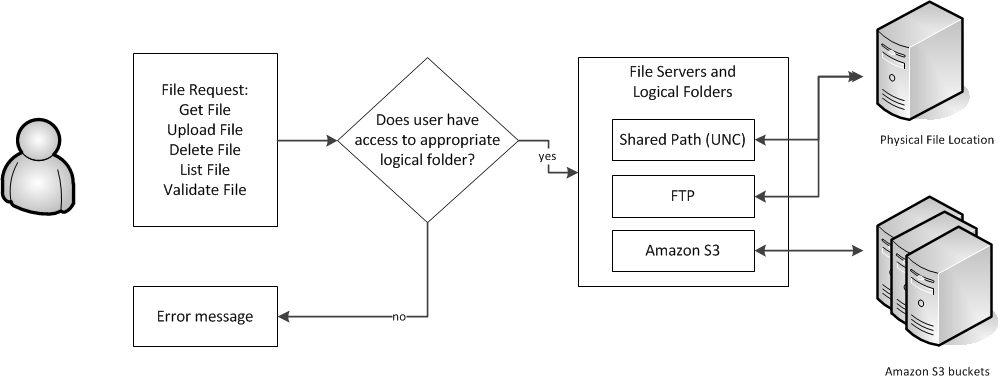Setting Up a File Server with Logical Folders
When file servers and logical folders are set up in the application, you can use them to specify locations for uploading or downloading files and documents. File servers and logical folder specifications can be used in either of these cases:
- On-premises applications, with FTP servers or shared servers
- Cloud applications, where the file servers are predefined as Amazon Web Service Simple Storage Services (AWS S3) “buckets” by the cloud team
Prerequisites:
- You must be a system administrator for this application, with permission to access the appropriate forms.
- Decide where your file servers should reside (cloud, FTP server, or shared on-premises server), and know the file path and login information, if on-premise.
- Decide what logical folders you need to create. Some logical folders are predefined by the application. Others might depend on your company’s needs, for example, HR documents.
- Determine which logical folders should reside on which file server, if you have a choice of file servers.
- Decide which users should have access to which logical folders.
After the file servers and logical folders are defined, you can select them on parameters forms and on the Documents and Attached Documents forms. Then users can access the files from the File Maintenance form as shown in this diagram:
